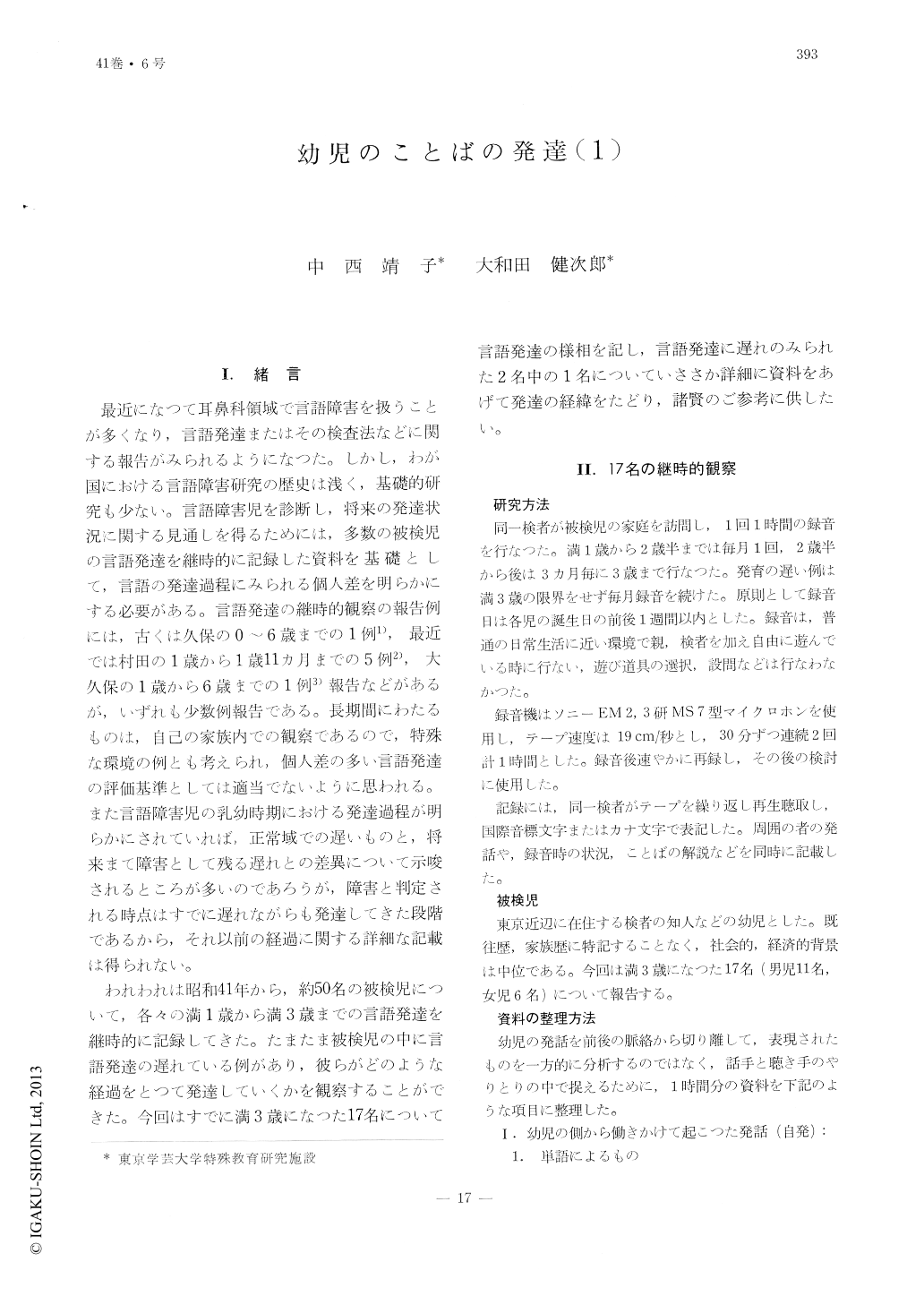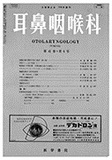Japanese
English
- 有料閲覧
- Abstract 文献概要
- 1ページ目 Look Inside
Ⅰ.緒言
最近になつて耳鼻科領域で言語障害を扱うことが多くなり,言語発達またはその検査法などに関する報告がみられるようになつた。しかし,わが国における言語障害研究の歴史は浅く,基礎的研究も少ない。言語障害児を診断し,将来の発達状況に関する見通しを得るためには,多数の被検児の言語発達を継時的に記録した資料を基礎として,言語の発達過程にみられる個人差を明らかにする必要がある。言語発達の継時的観察の報告例には,古くは久保の0〜6歳までの1例1),最近では村田の1歳から1歳11カ月までの5例2),大久保の1歳から6歳までの1例3)報告などがあるが,いずねも少数例報告である。長期間にわたるものは,自己の家族内での観察であるので,特殊な環境の例とも考えられ,個人差の多い言語発達の評価基準としては適当でないように思われる。また言語障害児の乳幼時期における発達過程が明らかにされていれば,正常域での遅いものと,将来まて障害として残る遅れとの差異について示唆されるところが多いのであろうが,障害と判定される時点はすでに遅れながらも発達してきた段階であるから,それ以前の経過に関する詳細な記載は得られない。
われわれは昭和41年から,約50名の被検児について,各々の満1歳から満3歳までの言語発達を継時的に記録してきた。たまたま被検児の中に言語発達の遅れている例があり,彼らがどのような経過をとつて発達していくかを観察することができた。今回はすでに満3歳になつた17名について言語発達の様相を記し,言語発達に遅れのみられた2名中の1名についていささか詳細に資料をあげて発達の経緯をたどり,諸賢のご参考に供したい。
The speech development was studied longitudinally in about fifty children from 1 to 3 years of age. Utterances made by the child in its ordinary home environment were taperecorded for 1 hour a day. Such a recording was repeated once a month from the age of 1 until the child reached the age of 2 years and 6 months. Thereafter, the procedure was carried out once every 3 months until the child reached the age of 3.
The data obtained from 17 subjects were analysed and were describedar on the following points: the classification of utterrances, the vocabulary development and the development in sentence construction.
The results showed that the communicating ability made a marked development during the age of 2 and 3 in 15 children. At the age of 2, the individual differences in both vocabulary and sentence construction varied to a large extent. Those who developed slowly to the age of 2, however, finally caught up with the faster ones when the age 3 was reached. The increment of vocabulary was two to ten times. Sentence utterances were found to be 60 to 70 per cent of the total utterances recorded and the frequency in which function words were used increased at the age of 3.
In this study group there were two exceptions,one with speech retardation in parallel with retardation in over-all mental development, and the other with delay in motor development but with neither gross mental retardation, nor hearing loss. The developmental processes of the latter case were reviewed and discussed.

Copyright © 1969, Igaku-Shoin Ltd. All rights reserved.


